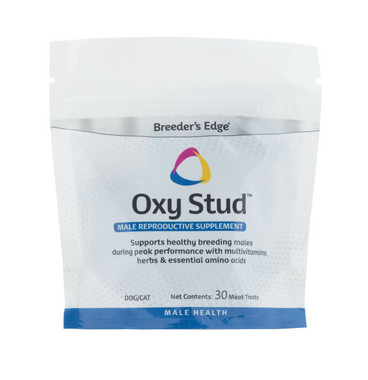Dog Headaches? Really? They get them too? How should I handle this?
Estimated 0 min read

Dog with headache
Imagine your dog, usually so vibrant and full of life, suddenly seems off—quieter, perhaps, or rubbing their head against the couch.
It’s these subtle shifts in behavior that might hint at a hidden ailment we know all too well: headaches.
While they can’t speak, our canine friends communicate in other ways, and it’s up to us to listen and understand.
With a blend of science and empathy, we can learn to decode these signals, offering relief and comfort to our faithful companions when most needed.
Facts About Dog Headaches
- Dogs likely experience headaches, indicated by behaviors like head pressing, sensitivity to touch, and seeking dark, quiet spaces
- Headache diagnosis in dogs is complex. It involves physical exams, neurological evaluations, and sometimes advanced imaging
- Treatment for canine headaches includes vet-prescribed pain relief and addressing the underlying causes. Generally, prevention is focused on regular health checks and a healthy lifestyle
Can Dogs Get Headaches?

Not so playful pooch
Have you ever watched your dog retreat from the bright afternoon sun or shy away from a playful head-scratch? It’s moments like these that might lead you to wonder if your furry companion experiences headaches similar to us. While they can’t tell us in words, science and veterinary insights suggest that dogs may indeed suffer from headaches.
The concept of dogs experiencing headaches is grounded in the recognition that dogs have a nervous system comparable to humans. They feel pain, they react to discomfort, and they seek relief from ailments just as we do. Veterinarians acknowledge the likelihood that dogs do get headaches. Although they do agree that confirmation is not straightforward. Unlike humans, who can articulate the specifics of their pain, dogs rely on non-verbal communication to express discomfort. This is subtle and signs are easily overlooked.
Observing a dog’s behavior is key to understanding their health. When a dog is in pain, you may see changes in behavior such as increased irritability or a decrease in playfulness. Even more, they may just not want to move. Physical signs could include sensitivity to touch on the head or neck or a tendency to press their head against objects. Likewise, they may appear to have an apparent aversion to light and noise. These behaviors may be indicative of headache pain, but they can also signal other health issues, so approach this topic with a discerning eye.
The science behind canine headaches is an evolving field; research suggests parallels between human migraines and observed behaviors in dogs. Example. A dog may seek out a dark, quiet space during a headache episode, similar to a person who has a migraine. This behavior suggests a shared experience of pain and the instinctual search for a soothing environment.
Symptoms of Headaches in Dogs
In the complex world of canine health, understanding when your dog is in pain is both a science and an art. Headaches, a common human complaint, aren’t as easily diagnosed in dogs, but certain canine behaviors can give us clues. The subtleties of canine body language and behavior are the primary indicators that your pet might have a headache.

Dog pressing head on wall could be a sign
Dogs can’t articulate their pain, but they do communicate discomfort through a variety of signs. As we said, a dog with a headache might press its head against walls or furniture — an action known as head pressing. This behavior is a red flag and should prompt further observation. You might also notice your dog shaking their head frequently or being unusually sensitive to your touch. You should observe carefully if this is around the head and neck areas. These are potential signs of discomfort that, in humans, would be consistent with a headache.
Behavioral changes are another telltale sign. A normally energetic dog becoming lethargic, showing disinterest in food, or withdrawing from interaction can indicate something is amiss. Similarly, if your dog is whimpering, shivering, avoiding bright lights or loud noises, these are canine equivalents of our response to headache pain.
The science behind these behaviors suggests a neurological basis for pain, akin to what humans experience. When dogs exhibit such symptoms, it’s possible they are responding to the same kind of sensory overload that plagues a person with a migraine. The aversion to light and sound, the need for a quiet and darkened space, all point to a neurological discomfort that transcends species.
As we consider the causes of these symptoms, it’s important to remember they can also be indicative of other health issues. These health issues may go well beyond headaches, The overlap of symptoms in various canine conditions requires a careful and informed approach to ensure accurate diagnosis.
Causes of Headaches in Dogs
When we peel back the layers of canine behavior indicative of headaches, we encounter a complex interplay of potential causes. The science of veterinary medicine suggests that, much like humans, dogs can suffer from primary or secondary headaches These phenomenon each has its own set of triggers and underlying conditions.

Dog with headache due to ear infection
Primary headaches in dogs could be the result of overactivity or due to issues within the nerves and blood vessels in the head. Likewise, they’re similar to tension headaches or migraines in humans. Imagine the throbbing pain of a migraine, the pressure of a tension headache; these sensations may not be foreign to our pets. Dogs, too, have a vascular system that can experience the same dysfunctions, leading to what we interpret as headache pain.
Secondary headaches are those caused by an underlying condition. In dogs, this could be as varied as an ear or sinus infection, dental problems, or even systemic illnesses like hypertension or dehydration. Each of these conditions can manifest pain in the head region, presenting what we might recognize as headache symptoms. For instance, an infection in a dog’s ear may lead to sensitivity around the head or neck, mimicking the pain of a headache.
Moreover, injuries to the head, such as those sustained in accidents, can lead to signs of discomfort and pain that are characteristic of headaches. The lethargy and loss of appetite seen in dogs with head trauma are not unlike the malaise humans feel when dealing with a severe headache.
The parallels between human and canine headaches extend to treatment responses as well. Dogs with encephalitis, an inflammation of the brain, have responded well to medications commonly used for human headaches. This cross-species similarity in treatment efficacy hints at a shared experience of headache pain, despite the challenges in direct diagnosis.
Diagnosing Headaches in Dogs

Take your pup to the vet to find the cause
Diagnosing headaches in dogs is akin to detective work, where each behavioral clue can lead to a deeper understanding of the dog’s condition. A comprehensive physical examination is the first step. Your vet looks for any signs of pain or discomfort that could be associated with a headache. This may include checking for sensitivity around the head and neck. Added to this, he may observe your dog’s response to light and noise, and assessing for any neurological deficits.
Neurological evaluations are crucial. As they can reveal subtle changes in a dog’s reflexes or cognitive functions that may point to a headache or other brain-related issues. Your vet may recommend advanced imaging techniques like MRI or CT scans to look for structural causes of head pain, such as brain tumors or trauma. These tools allow veterinarians to peer inside the canine skull, searching for evidence that could explain the symptoms observed.
The science of diagnosing canine headaches is not just about identifying the pain but also understanding its origin. Without specific biological markers or tests for headaches in dogs, the process requires a holistic approach. This includes considering all possible causes and eliminating them one by one.
Treatment for Dog Headaches
Once a headache is suspected or diagnosed in a dog, the next critical step is treatment. It’s a process that must be handled with care, as the canine body reacts differently to medications than the human body. The cornerstone of treating canine headaches is the judicious use of pain relief under veterinary guidance.

Trust your vet on what meds to give
It’s imperative to understand that medications that are safe for humans can be Very Harmful to dogs. Common over-the-counter pain relievers, such as ibuprofen and naproxen, are toxic to our canine friends. Avoid them at all cost. Even medications that are considered safe, like acetaminophen, should never be administered without a veterinarian’s prescription. Albeit, the dosage and frequency are critical to avoid complications for your pup.
Veterinarians may prescribe specific pain relief medications that are formulated for dogs. These medications not only alleviate the pain but also reduce inflammation; a contributing factor to headaches. The treatment plan may also include supportive care. Included in this are plans to ensure that your dog is in a calm and comfortable environment and free from stressors.
In cases where secondary headaches are diagnosed, treating the underlying condition is paramount. For example, if a headache is due to an ear infection, addressing the infection effectively can relieve the headache. This approach underscores the importance of a comprehensive diagnosis that targets the source of the headache, rather than just the symptoms.
With careful management and appropriate medical intervention, dogs with headaches can find relief and return to their normal, happy selves. As we continue to prioritize their well-being, prevention emerges as a key theme. With this in mind,we are guided towards strategies to keep headaches at bay in our canine companions.
How to Prevent Dog Headaches
In the realm of canine health, prevention is as crucial as treatment. For dog owners, this means creating an environment and lifestyle that minimizes the risk factors associated with headaches. Regular veterinary check-ups are the bedrock of preventive care. With this approach, problems are caught before they escalate into more serious conditions that could lead to headaches.

Healthy, happy, active dog prevents canine headaches
A balanced diet, adequate hydration, and proper exercise contribute to overall health and can help prevent headache conditions. Monitoring your dog’s weight is also essential. Moreover, obesity can lead to health issues that may manifest with headache-like symptoms. On hot days, ensure that your dog doesn’t overheat and has constant access to fresh water can prevent dehydration. Those factors lead to a common headache trigger, just as they can in humans.
Attention to your dog’s comfort extends to their accessories as well. A well-fitting collar and harness are important to avoid unnecessary pressure on the neck and spine, that’s a headache trigger. Observing your dog’s behavior in a bright lights or noisy environment can help you identify and avoid headache triggers.
When it comes to responding to potential headaches, knowing when to seek veterinary care is key. Note any significant change in your dog’s behavior or routine. If your dog exhibits symptoms such as hiding, acting out of character, or signs of discomfort, it’s time to consult your veterinarian. These symptoms could indicate a headache or a range of other health issues. Accordingly, early intervention is critical.
If you suspect a head injury or if your dog displays severe symptoms like seizures or loss of consciousness, contact your Vet. Such signs can indicate a concussion or other serious conditions that require prompt medical intervention. Again, as with humans, better to stay ahead of the curve.
Maintaining a vigilant eye on your dog’s health and behavior is a continuous process that can help ensure their well-being. By combining preventive measures with a responsive approach to potential health issues, you can keep your dog healthy.
Banixx Dog Blog
At Banixx, we’re committed to providing you with the knowledge and resources to make you the guardians of your dog’s well-being. Our dedication to your pet’s health is unwavering. We invite you to return to our Banixx blog for more insights and guidance.
Together, let’s continue to enrich the lives of our dogs with the care and attention they deserve, ensuring their tails keep wagging with joy and vitality. If you are interested in how to maintain yourdogs food and water bowls, we cover that. Interested in more quirky items ? such aswhy your dog sleeps against you, yep, we’ve got that.
Sources
https://www.ellevetsciences.com/pet-care/do-dogs-get-headaches/
https://pubmed.ncbi.nlm.nih.gov/24033420/
https://bettervet.com/resources/pet-health-care/do-dogs-get-headaches
https://petcube.com/blog/do-dogs-suffer-from-headaches/
akc.org/expert-advice/health/do-dogs-get-headaches/
https://www.holistapet.com/blogs/dog-care/can-canines-get-headaches#:~:text=Headaches%20can%20be%20a%20common,be%20more%20prone%20to%20headaches
https://www.veterinaryteachingacademy.com/Do-Dogs-Get-Headaches
https://www.greatpetcare.com/dog-health/do-dogs-get-headaches/
https://gizmodo.com/do-dogs-get-headaches-1832867382

















